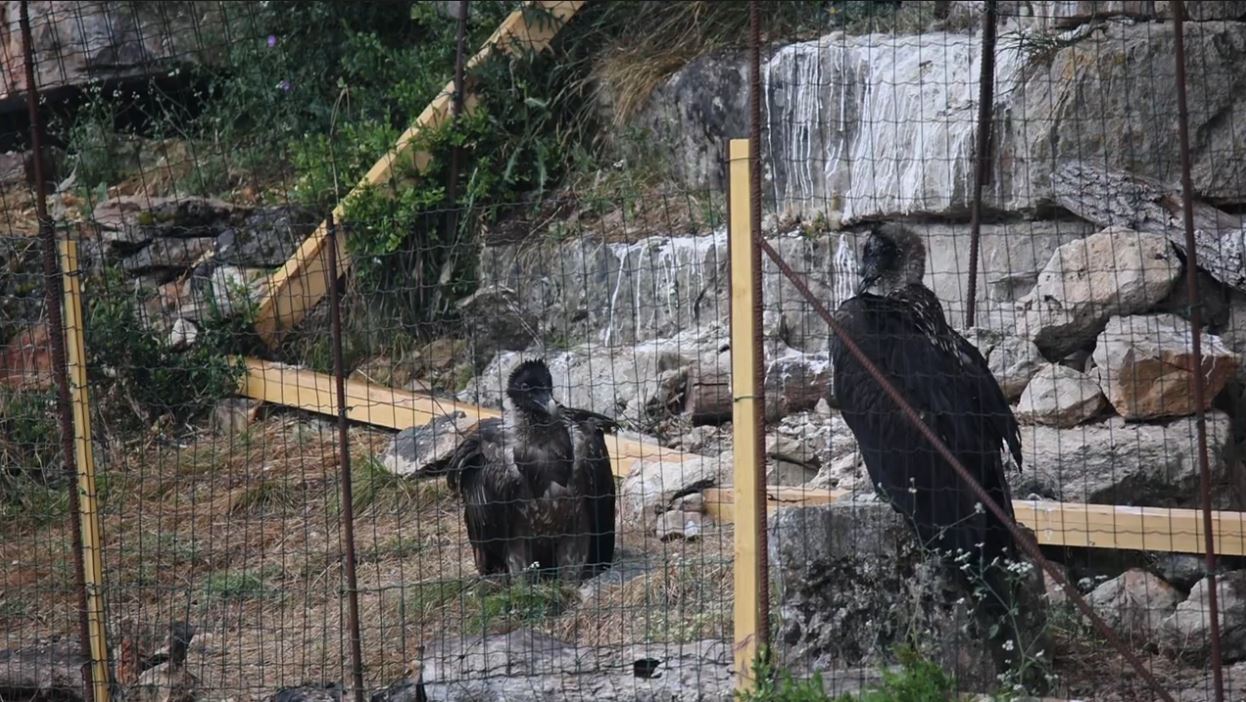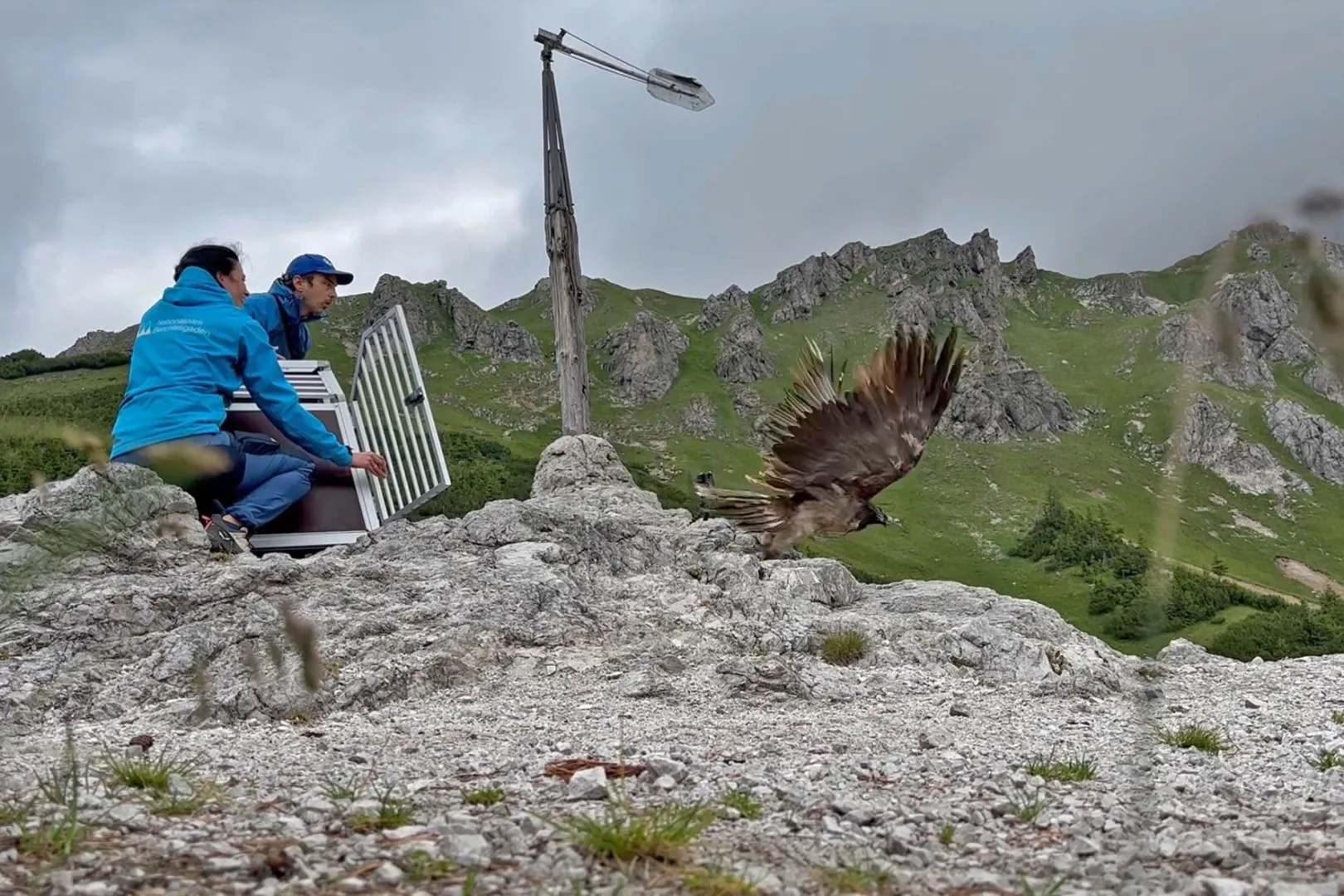Winter is just starting, yet for bearded vultures (both in the wild and in captivity), the 2015-2016 breeding seasons is just starting.
This year, the race for first egg laid in the bearded vulture captive breeding network, coordinated by the VCF to support the ongoing reintroduction projects, was won by the Specialized Captive Breeding Center in Guadalentin, managed by the Junta de Andalucia, which registered an egg on the 8th December. Last year the earliest breeding female was in the Richard Faust Specialized Captive Breeding Center in Haringsee, Austria (6th December).
Soon after, the pair in Liberec zoo also laid an egg (10 December), followed by females in Haringsee, a second female in Guadalentin and female in Vallcalent (Spain) (15-16 December). Now a pair at the specialized breeding center in Haute-Savoie managed by ASTERS has also already laid one egg (see photo).
During the next weeks almost all pairs will lay. In general females which are breeding for the first time lay their first egg later (an average difference of around 30 days between first-egg laying date and later). Just before laying their eggs, females become more occupied with the nest and can be found lying down on it more often. In double clutches the second egg is laid on average 5-6 days later, and is smaller and almost white.
Bearded vultures are one of the earliest breeders in Europe – their timing perfectly adapted to have chicks in early spring, when many of the mountain herbivores on which they feed (when they die) have their first births – and birth complications! Pairing take place in October or November, approximately 2 months before eggs are laid. The snow and cold of their mountain realms does not deter them, and so they incubate through the cold winter months.
The Vulture Conservation Foundation is the coordinator of the bearded vulture European Endangered Species Programme (EEP), a collaborative and coordinated network of over 30 zoos, wildlife parks, specialized breeding centers and private collections, that aims to breed the species in captivity for conservation purposes. The bearded vulture EEP is at the base of the ongoing reintroduction projects in the Alps, Cazorla (Southern Spain) and Cevennes (Central France). In the Alps the species is staging a remarkable comeback, with +30 established territories 100 years after it went extinct there – in Andalusia the species bred in the wild for the first time this year, with the first wild born young fledgling from its nest in the Cazorla mountains last July.



